
Annals of Telecommunications
Scope & Guideline
Empowering researchers to shape the future of communication.
Introduction
Aims and Scopes
- Telecommunication Technologies and Protocols:
The journal explores various telecommunication technologies, including wireless, optical, and satellite communications, alongside their underlying protocols and standards. - Network Security and Privacy:
Research in this area addresses the critical issues of cybersecurity, data privacy, and secure communication protocols, emphasizing the development of robust security measures for telecommunications. - Internet of Things (IoT) and Edge Computing:
The journal investigates the integration of IoT technologies with telecommunications, exploring concepts such as edge computing, data aggregation, and efficient resource allocation in IoT networks. - Machine Learning and AI in Networking:
A significant focus is placed on the application of machine learning and artificial intelligence techniques for network optimization, anomaly detection, and intelligent resource management. - 5G and Beyond Technologies:
Research related to the advancements in 5G networks and the conceptualization of future communication systems, including 6G, is a core area of interest. - Wireless Sensor Networks and Data Processing:
The journal publishes studies on the design, implementation, and optimization of wireless sensor networks, alongside innovative data processing protocols.
Trending and Emerging
- AI and Machine Learning Applications:
There is a significant increase in research focused on integrating AI and machine learning into telecommunications for tasks such as network optimization, predictive maintenance, and security enhancement. - 5G and Next-Generation Networks:
As the deployment of 5G networks accelerates, research on next-generation technologies, including 6G concepts, is emerging as a critical area of exploration. - Security in IoT and Edge Computing:
With the proliferation of IoT devices, there is a growing emphasis on developing security measures specifically tailored for IoT and edge computing environments. - Blockchain for Network Security:
Blockchain technology is increasingly being explored for its potential to enhance network security, including applications in data integrity, access control, and decentralized identity management. - Energy Efficiency in Networking:
Research is trending towards energy-efficient protocols and architectures, particularly in the context of IoT and large-scale network deployments, reflecting a growing concern for sustainability. - Data Privacy and Ethical AI:
As concerns about data privacy rise, there is a notable trend towards research that focuses on ethical AI practices, privacy-preserving technologies, and regulatory compliance in telecommunications.
Declining or Waning
- Traditional Telecommunication Infrastructure:
Research related to legacy telecommunication infrastructures, such as analog systems, is becoming less common as the field shifts towards digital and software-defined approaches. - Basic Network Management Techniques:
The focus on basic network management strategies is declining as more advanced, automated, and AI-driven management systems gain traction in contemporary research. - Conventional Security Protocols:
There appears to be a reduced emphasis on conventional security protocols as researchers increasingly explore innovative and adaptive security solutions that leverage machine learning and blockchain technology. - Static Routing Protocols:
The interest in traditional static routing protocols is waning as dynamic routing and adaptive algorithms become more relevant in the context of modern networking challenges. - Low-Level Hardware Implementations:
Research centered on low-level hardware implementations for telecommunications is diminishing in favor of higher-level, software-centric solutions that offer greater flexibility and scalability.
Similar Journals

International Journal of Networked and Distributed Computing
Empowering Scholars in the Realm of ComputingWelcome to the International Journal of Networked and Distributed Computing, published by SpringerNature, a premier outlet for cutting-edge research in the realms of computer networks and distributed computing systems. Established as an Open Access journal since 2013 and based in the Netherlands, this publication strives to disseminate high-quality, peer-reviewed studies that address the complexities of contemporary computing challenges. With an impact factor that reflects its growing influence—positioned in the Q3 category for both Computer Networks and Communications and Computer Science Applications—this journal serves as a pivotal resource for scholars and practitioners aiming to advance knowledge and innovation in this rapidly evolving field. The journal encompasses diverse topics, from network protocols to distributed algorithms, ensuring that researchers, professionals, and students can find relevant insights and methodologies to inform their work. Join us in exploring the depths of networked and distributed computing, contributing to a collaborative academic environment that shapes the future of technology.
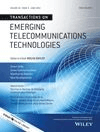
Transactions on Emerging Telecommunications Technologies
Fostering Collaboration in Telecommunication AdvancementsTransactions on Emerging Telecommunications Technologies, published by WILEY, is a prestigious academic journal that has been at the forefront of electrical and electronic engineering since its inception in 2012. With an impressive Impact Factor that places it in the Q1 category of the field, this journal aims to disseminate groundbreaking research and technological advancements that shape the next generation of telecommunications. Operating under an Open Access model, it ensures that valuable insights and innovations are readily accessible to a global audience, fostering collaboration among researchers, professionals, and students alike. Housed in the United Kingdom, it is strategically positioned within a vibrant community of scholars and industry experts. As of 2023, the journal ranks #116 out of 797 in its category according to Scopus, reflecting its high visibility and impact within the academic community. The journal continues to be a vital resource for those looking to stay informed about emerging trends and developments in telecommunications technology.

IEEE Communications Surveys and Tutorials
Empowering Researchers with In-Depth Surveys and InsightsIEEE Communications Surveys and Tutorials is a premier journal published by the IEEE-INST ELECTRICAL ELECTRONICS ENGINEERS INC, renowned for its insightful contributions to the field of communications engineering. Since its inception in 2005, this journal has become an authoritative source of comprehensive surveys and instructional materials addressing current trends and advancements in communication technologies. With an impressive Q1 ranking in Electrical and Electronic Engineering, it ranks first among 797 journals in its category, placing it firmly in the 99th percentile according to Scopus metrics. Researchers, professionals, and students alike benefit from its well-researched articles, making it an essential resource for those seeking to deepen their understanding or stay updated on cutting-edge innovations. Although it does not currently operate as an open-access outlet, the journal's commitment to excellence ensures that each publication is a valuable asset for the academic community.

Digital Communications and Networks
Leading the charge in network research excellence.Digital Communications and Networks, published by KEAI PUBLISHING LTD, stands at the forefront of research in the rapidly evolving fields of communication, computer networks, and hardware architecture. Since its inception in 2015, this open access journal has been committed to disseminating high-quality, peer-reviewed articles that contribute to technological advancements and academic discourse in these critical domains. With an impressive Impact Factor and achieving Q1 Quartile rankings in its relevant categories for 2023, it has established itself as a vital resource for researchers, professionals, and students aiming to stay ahead in a competitive landscape. The journal's robust standing is reflected in its notable Scopus rankings, underscoring its influence in Computer Science and related fields. As we look toward the future, the journal continues to invite innovative research that shapes the digital communication landscape until 2024 and beyond.
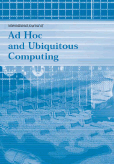
International Journal of Ad Hoc and Ubiquitous Computing
Innovating Today for a Connected TomorrowThe International Journal of Ad Hoc and Ubiquitous Computing, published by InderScience Enterprises Ltd, is a premier platform dedicated to advancing the fields of computer networks, communication systems, hardware, and software architecture. Since its inception in 2005, this journal has served as a critical resource for researchers, professionals, and students aiming to explore the intricate dynamics of ubiquitous computing and ad hoc networks. Though currently not an open-access journal, its scholarly contributions are well-recognized, as evidenced by its rank in the Scopus database, which places it within the lower quartiles of its respective categories. With an increasing focus on innovative solutions in computer science, the journal aims to facilitate knowledge dissemination and encourage interdisciplinary collaborations. Researchers are particularly drawn to the journal for its comprehensive coverage of emerging technologies, making it an invaluable asset in a world increasingly reliant on sophisticated communication infrastructures. As it continues to thrive towards 2024, the journal remains committed to fostering a vibrant academic community.
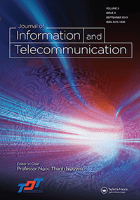
Journal of Information and Telecommunication
Unleashing Insights in Telecommunications and Information Technology.Journal of Information and Telecommunication, published by TAYLOR & FRANCIS LTD, is a distinguished open access journal that has been enhancing the global discourse since its establishment in 2017. With an ISSN of 2475-1839 and an E-ISSN of 2475-1847, this journal is located in the United Kingdom and dedicates its focus to the fields of information technology, telecommunications, and related disciplines. Boasting a respectable Q2 quartile ranking across various categories including Computer Networks and Communications, Electrical and Electronic Engineering, and Computer Science Applications in 2023, it ranks notably in the top percentiles of scopus rankings, asserting its significance in the academic community. The journal's commitment to open access since its inception has fostered widespread accessibility, encouraging research dissemination and collaboration on a global scale. By providing a platform for high-quality research, it aims to unite researchers, professionals, and students in their pursuit of innovation and excellence in the ever-evolving digital landscape.

Future Internet
Illuminating the Path of Internet Research and DevelopmentFuture Internet is a leading open-access journal published by MDPI, dedicated to advancing the field of Internet technologies and communication networks. Since its inception in 2009, the journal has provided a platform for rigorous research and innovative ideas in the context of the rapidly evolving digital landscape. Based in Switzerland, it has established itself as a prominent publication, earning a commendable Q2 ranking in the category of Computer Networks and Communications for 2023. With a Scopus ranking of #87/395 and a notable 78th percentile, Future Internet fosters interdisciplinary collaboration, making valuable contributions to the understanding of Internet systems, protocols, and applications. Researchers, professionals, and students alike will find a wealth of insightful articles addressing both theoretical foundations and practical implementations. The open-access format ensures that all readers have immediate and unrestricted access to high-quality research, facilitating knowledge dissemination and informed decision-making in academia and industry alike.
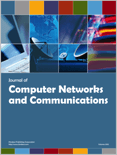
Journal of Computer Networks and Communications
Transforming Communication Through Rigorous ScholarshipThe Journal of Computer Networks and Communications is a premier open-access journal published by HINDAWI LTD, dedicated to advancing the field of computer networks and communications. With an ISSN of 2090-7141 and an E-ISSN of 2090-715X, this journal has been accessible to researchers since its inception in 2011, promoting widespread dissemination of knowledge in this rapidly evolving discipline. Based in Egypt, the journal's editorial standards are upheld through a rigorous peer-review process, contributing to its strong academic reputation. As of 2023, it holds a commendable Q2 ranking in Computer Networks and Communications and a Q3 ranking in Information Systems within its category quartiles. According to Scopus rankings, it occupies the 141st and 143rd positions in its respective fields, showcasing its relevance and influence in the academic community. The journal's mission is to publish high-quality research that addresses contemporary challenges in networking technologies and systems, making it an essential resource for researchers, professionals, and students seeking to innovate and excel in these fields.

International Journal of Wireless Information Networks
Pioneering Research in Wireless Information NetworksInternational Journal of Wireless Information Networks, published by Springer, is a premier outlet for scholarly research in the fields of wireless information and communication technologies. With an ISSN of 1068-9605 and an E-ISSN of 1572-8129, this journal has established itself as a significant contributor to the literature since its inception in 1994. As evaluated in 2023, it holds a commendable Q2 ranking in several categories, including Computer Networks and Communications, Electrical and Electronic Engineering, and Hardware and Architecture, reflecting its robust impact and relevance within the academic community. Furthermore, it is ranked within the top quartiles in Scopus, placing it in the 76th, 74th, and 73rd percentiles in relevant fields. While the journal does not currently offer open access options, it remains an essential resource for researchers, professionals, and students dedicated to advancing knowledge and innovation within wireless information networks. The authoritative content published within these pages positions the journal at the forefront of ongoing technological developments, making significant contributions to the field until at least 2024.
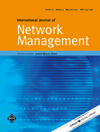
International Journal of Network Management
Connecting Ideas, Shaping the Future of Network Management.The International Journal of Network Management, published by WILEY, has been an authoritative resource in the field of network management since its inception in 1991. With a strong academic reputation reflected in its 2023 category quartiles placing it in Q2 for both Computer Networks and Communications and Computer Science Applications, this journal is ranked within the top tiers of its categories, underscoring its pivotal role in disseminating high-quality research. The journal aims to provide insights into the latest advancements in network management strategies, technologies, and applications, catering to the needs of researchers, professionals, and students alike. By embracing rigorous peer-review processes and a commitment to publishing cutting-edge studies, it serves as a crucial platform for the exchange of knowledge and innovation within the network management community. Explore the wealth of resources and join the dialogue among a diverse audience striving to shape the future of computer networks and applications.